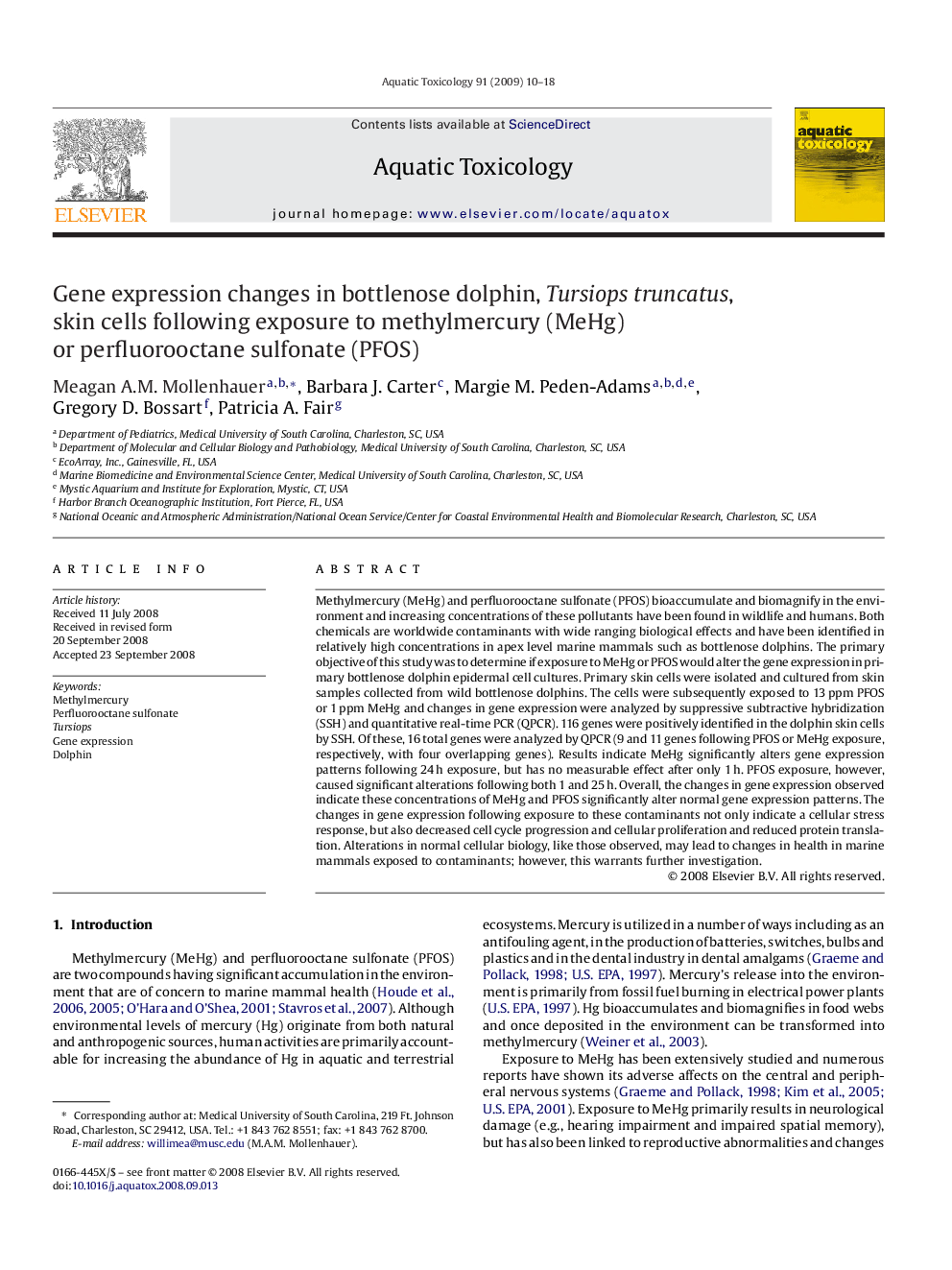| کد مقاله | کد نشریه | سال انتشار | مقاله انگلیسی | نسخه تمام متن |
|---|---|---|---|---|
| 4530612 | 1324717 | 2009 | 9 صفحه PDF | دانلود رایگان |

Methylmercury (MeHg) and perfluorooctane sulfonate (PFOS) bioaccumulate and biomagnify in the environment and increasing concentrations of these pollutants have been found in wildlife and humans. Both chemicals are worldwide contaminants with wide ranging biological effects and have been identified in relatively high concentrations in apex level marine mammals such as bottlenose dolphins. The primary objective of this study was to determine if exposure to MeHg or PFOS would alter the gene expression in primary bottlenose dolphin epidermal cell cultures. Primary skin cells were isolated and cultured from skin samples collected from wild bottlenose dolphins. The cells were subsequently exposed to 13 ppm PFOS or 1 ppm MeHg and changes in gene expression were analyzed by suppressive subtractive hybridization (SSH) and quantitative real-time PCR (QPCR). 116 genes were positively identified in the dolphin skin cells by SSH. Of these, 16 total genes were analyzed by QPCR (9 and 11 genes following PFOS or MeHg exposure, respectively, with four overlapping genes). Results indicate MeHg significantly alters gene expression patterns following 24 h exposure, but has no measurable effect after only 1 h. PFOS exposure, however, caused significant alterations following both 1 and 25 h. Overall, the changes in gene expression observed indicate these concentrations of MeHg and PFOS significantly alter normal gene expression patterns. The changes in gene expression following exposure to these contaminants not only indicate a cellular stress response, but also decreased cell cycle progression and cellular proliferation and reduced protein translation. Alterations in normal cellular biology, like those observed, may lead to changes in health in marine mammals exposed to contaminants; however, this warrants further investigation.
Journal: Aquatic Toxicology - Volume 91, Issue 1, 18 January 2009, Pages 10–18